#himalayan gene
Explore tagged Tumblr posts
Text
Favorite Cat Coat Pattern
The tortoiseshell point Siamese!

Did you know? Siamese cats have a genetic mutation called the Himalayan gene, which produces temperature-sensitive pigment. Darker sections are due to cooler temps. and lighter sections are due to warmer temps.
Their coats can actually change colors depending on age and season.
#siamese#siamese facts#cat#cat facts#cute#tortoiseshell#tortie cat#tortie point cat#cat design#cool#cat genetics#tyrosinase#genetic mutation#himalayan gene#pigment#science
49 notes
·
View notes
Text
i do love the popular hc that aragorn survives off of pine needles and tree bark but alternatively,
i like to entertain the thought that he’s an extremely picky eater w niche food hyperfixations. (Plot twist: eowyn’s soup was actually fine, he doesn’t like eating veggies).
Has somehow maintained an insane sweet tooth and needs to douse everything in inordinate amounts of salt despite living in the wild as a ranger and not having a built-up sugar/salt tolerance or anything. IMAGINE?!? He was just born with that dawg in him and likes it like that. he’s picky 🔥🤭 quirky ass ranger
initially, everyone thinks that he politely refuses the hearty meals gimli cooks up because he’s self sacrificing, or he wants to leave some for everyone, or he just is used to meager eats in the wild, but the truth comes out when pippin catches him secretly snorfling gummy bears for dinner in his tent and gets extremely outspoken about why aragorn never offered any to them, (“it’s downright offensive it is!”). it was a 5 lb wholesale sack of gummy bears, so pippin’s anger is probably justified
i see this man living on chocolate oranges and sour patch kids. he just really likes the instant energy aspect of it. and he somehow never crashes (dunedain genes is frodo’s best guess). sam is concerned by this and tries to make him have three square meals a day at least.
merry stole one of his chocolate oranges once, which just made aragorn crack down on hiding his sweets bag better
interestingly enough, he’s not particularly into sweet drinks tho. it’s candy and water for him
he loves to cure his meat in 3x the required amount of salt and then dips each bite in salt which boggles sam’s brain (“frying your taste buds you are! havent you heard of balancing your dishes mister strider!”). will pop pinches of pure salt during the day instead of taking naps when he’s tired. not all salt is made equal btw. man loves a pink himalayan
also, when he’s gone in the morning, it’s because he rode to the nearest town to barter rabbit pelts for more sweets
61 notes
·
View notes
Note

Hello! This is my kitty pourdoor who walked into my house six months ago! She's from a feral colony of mostly ticked tabbies and solid blue kitties, but there was a purebred Himalayan looking cat around for a while, and since then there's been colorpoint cats born with varying point colors and coat lengths. She has the slightest bit of length to her coat (mostly hidden in the box, here) and I'm noticably less allergic to her than other cats, so I kinda wonder if she's not just a random mutation colorpoint. I'd love to know your thoughts but I also just love her and thought you might want to see her. When I took this picture she was sulking because my partner was sitting where she wanted to sleep. So she just stared at them like this for hours.
Every pointed cat has the very same mutation: the 940th amino acid of the tyrosinase gene changed from guanine to adenin. This probably happened only once in history, and every colorpoint and every carrier is the descendant of that one single cat in which this mutation happened; not the same mutation happening again and again in random cats. So. If you had seen a pointed cat in the area (where the pattern wasn't present before) and then pointed kittens started to born, i think it's very-very-very likely she's a descendant of that original himalayan-looking cat.
Persian-type breeds aren't traditionally on the more-likely-to-be-hypoallergenic list, so if the pointed ancestor really is a himalayan, then you not reacting to this kitty is probably just a lucky coincidence.
42 notes
·
View notes
Text
My thoughts of the new Minecraft wolf variants!
With the recent announcement of the new wolf variants, I wanted to give my two bits about what real life animal each of the variants are based on! (I study animal ecology so I get excited when animals are depicted in anywhere)
The Pale Wolf, Black Wolf, Snowy Wolf, Ashen Wolf, and Woods Wolf
All of these wolf variants are based on the Grey Wolf (Canis lupus), whether it be the typical Plains Wolf (Canis lupus nubilus), or a different subspecies. The Grey Wolf is the most common wolf species found on the world, typically lives in packs of 4-9 members, and typically has 5 accepted subspecies in the science community - but in total has over 30 subspecies (determining subspecies can be tricky).
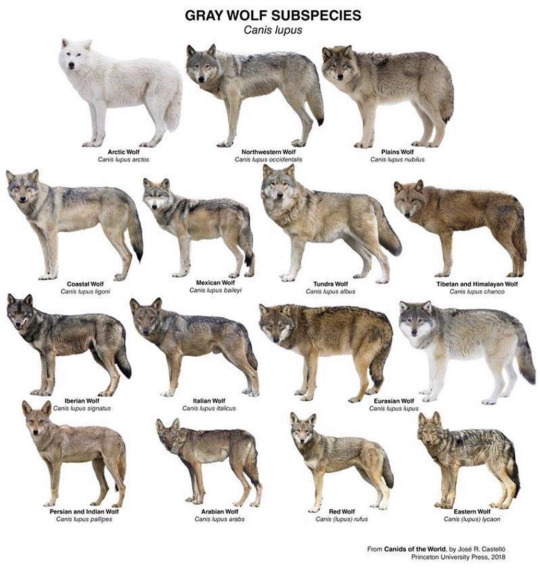
The Pale Wolf is specifically meant to represent a Plains Wolf, as this design has been representing the Grey Wolf in Minecraft for at least 12 years. The Taiga biome is one of the biomes where Grey Wolves can be found, making it a great place to find Pale Wolves in Minecraft.

The Black Wolf is not a subspecies, but rather a color variant of the Gray Wolf. The black coloring of their coats is not typically caused by melanism, but rather is a normal gene found in Grey Wolves. One of the causes of wolves having a black coat is due to the black gene being linked to higher immunity to canine distemper, meaning the black wolves that survive the virus are able to reproduce and pass on their black genes. Does this mean distemper exists in Minecraft? Probably not, but that's up to your interpretation.

The Snowy Wolf is based on the Arctic Wolf (Canis lupus arctos). Artic wolves' white coats help them blend into the snow to help them hunt prey, and to hide them from potential predators.
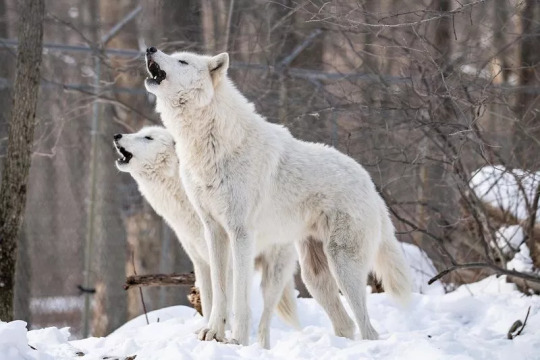
The Ashen Wolf is likely based on the Eurasian Wolf (Canis lupus lupus). The Eurasian wolf can have similar coloring to the plains wolf, but has also been found with greyer coloring along its back, tail, and upper legs and face, and with white on its cheeks, underbelly and lower legs.
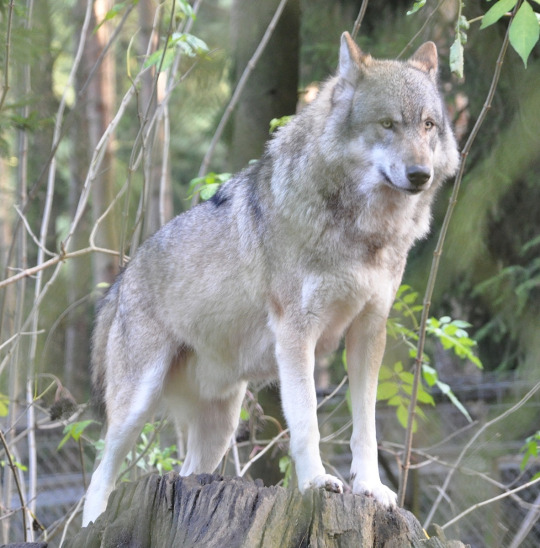
I think that the Woods Wolf is based on the Tibetan/Himalayan Wolf (Canis lupus chanco). It was a challenge to find what subspecies the woods wolf was based on because most wolves don't have the deep brown-orange coloring seen on the woods wolf, but the Tibetan/Himalayan wolf can often be seen with these colorings in the wild.
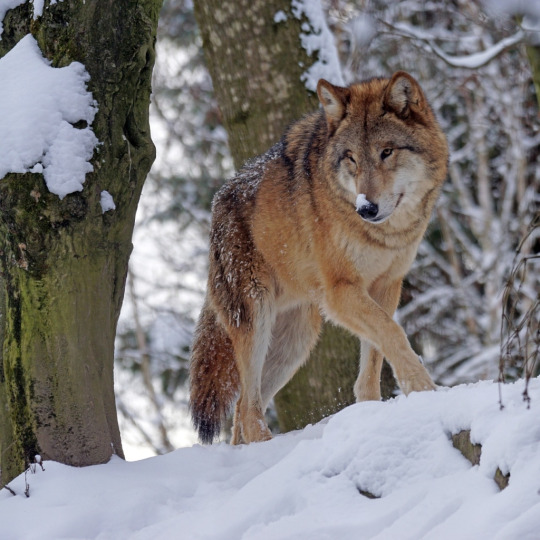
The Rusty Wolf
The Rusty Wolf is based on the Dhole (Cuon alpinus), also known as the Asiatic Wild Dog. Dholes have a rich tawny coat with a rich chocolatey tail. Unlike another popular red canine (the dingo), Dholes live in tropic forests, rainforests, and other habitats, making it an appropriate fit to be the jungle dwelling rusty wolf.
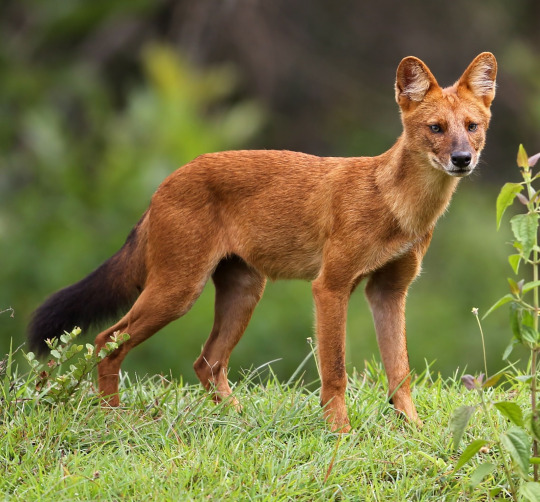
The Spotted Wolf
The Spotted Wolf is based on the African Wild Dog (Lycaon pictus), also known as the Painted Dog or the Cape Hunting Dog. This is variant is my favorite of the variants, and is one of my favorite canines of all time. African wild dogs live in savannah and grasslands biomes irl, and have beautiful coats ranging in different patterns of tawny, black, and white. I don't know if this is possible for Minecraft mechanics, but hopefully the spotted wolves will have different coat variants like their irl counterparts.

The Striped Wolf
The Striped Wolf is based on the Aardwolf (Proteles cristata), which is a species of hyena, making them felids instead of canids! (Yes, hyenas are more closely related to cats than dogs). Aardwolves can be found in semi-arid and open plains, making the badlands a good place to find them in-game. Fun fact! Aardwolves mainly eat termites/ants. Hopefully the striped wolf won't starve in a "bugless" game (rip fireflies).
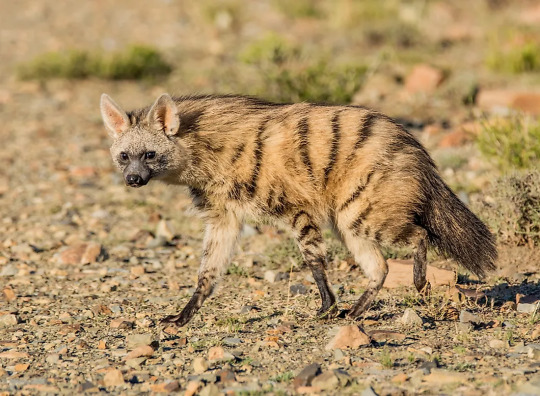
The Chestnut Wolf
This one frustrates me. I couldn't find a canine or canine adjacent animal that had even a similar coat pattern. This is not a wolf. It is a dog. Probably a Norwegian Elkhound.

#minecraft#minecraft wolf#minecraft wolves#wolf#wolves#grey wolf#dhole#african wild dog#aardwolf#norwegian elkhound#zoology#animal ecology
108 notes
·
View notes
Note
My thoughts of ASGZC as cats
Sephiroth: would either be a Persian or a main coon because of his hair. Quiet at times, until feeding time of course. Playful, when in the mood.
Genesis: Abyssian because of the reddish fur but have the mindset of a crazy orange cat. Himalayan for his sassines
Angeal: A birman, for his loyalty towards his friends, somewhat laid back nature also friendly.
Zack: a dog who thinks he's a cat
Cloud: a Norwegian Forest cat, a small one, friendly not demanding of attention. Known to be on viking war ships to catch mice, not terrified of the cold water and snow
Cat AU
Kittyroth: This is Gene-hiss.
Gene-hiss: <3
Kittyroth: That's Catgeal.
Catgeal: ...
Kittyroth: And that's Cloudkitty.
Cloudkitty: ?
Zack: Woof!
Kittyroth: Oh, and that's Zack. He's special.
#ff7#ffvii#final fantasy 7#sephiroth#ffvii crisis core#genesis rhapsodos#final fantasy vii#angeal hewley#zack fair#cloud strife#ff7 crisis core
58 notes
·
View notes
Text
On the Discworld humans rarely see Death as the 7 foot scythe wielding skeleton in black robes that he is, but rather as a very thin man whose face they can’t quite remember, while rats can see the Death of Rats for the black robed scythe wielding skeleton that he is.
If this weren’t the case for rats and they saw (or smelled) a rat who they couldn’t quite remember, what do you think they’d see?
Do you think that it would depend on the kind of rat that saw him, so they’d be most likely to see whatever kind of rat they were? Or would it be a more consistent appearance regardless of species?
Would he be a black self in the absence of his robes? Or would he be a black hooded, as though wearing an executioner’s hood (although a black bareback would probably be a closer match in appearance)? Perhaps a black blaze could look like his bone nose peaking out from under his hood? Maybe he’d be a roan, the white face gradually fading into darker fur like a ghost? Would he be white or light such as a champagne, beige, or ivory, like the skeleton he actually is? Or a Siamese or Himalayan to achieve a similar effect with the darker nose corresponding to his orange teeth? (Did he have orange teeth? Or would being a personification of death lend to lighter front teeth for all the unhealthy rats that died?)
Perhaps he’d be a pearl, which would be fitting, considering it’s a homozygous lethal gene.
Would his coat be standard, or would it be something else? I don’t know how well a rex coat would work, because that would mean curly whiskers, and I think that a satin coat would be too shiny. A velvet coat might work or it might be too shiny. A bristle coat might work, but could look permanently disheveled
Or perhaps he’d be a hairless rat? But then the whiskers would likely be curled…
What color eyes would he have? Of course eye certain fur colors correspond with certain eye colours, but
6 notes
·
View notes
Text

the Noru, another race that i've written for the lore that im making ' ... After being injected into warm biomes, the Noru were likewise able to adapt to a more wintery life. This breed has the Himalayan Gene. They transitioned from jungles to cold forests like those in the north. Noru society was among the first to study medicine. Phytotherapy is still taught to new generations; it is a part of their culture.'
#digital art#artedigital#dibujo#original character#ilustracion#worldbuilding#original species#lore dump
2 notes
·
View notes
Note
Another rat question, borne of basically no knowledge but curiosity since you mentioned rat genetics…
How does color inheritance in rats work? Are there any sex-specific colors or patterns? (Like how calico cats are overwhelmingly XX)? Can there be a lot of variation in a litter?
I don’t know of any sex specific genes in rats.
You can get a LOT of variation in a litter! I’ll try to track down a litter I had where almost every single baby was different. And it was a large litter lol.
Basically the way coat genetics works is that there are two base colors: Agouti and black. Every other color is built on top of that with modifiers and dilutions.
For example, in the "fuck them kids" rat video, the momma is a hooded (marking) beige (color). Beige is caused by a specific dilution gene on top of a black base. If the base was agouti instead of black, the color would be called Fawn and it would be a lot more yellow and have variations in the hairs.
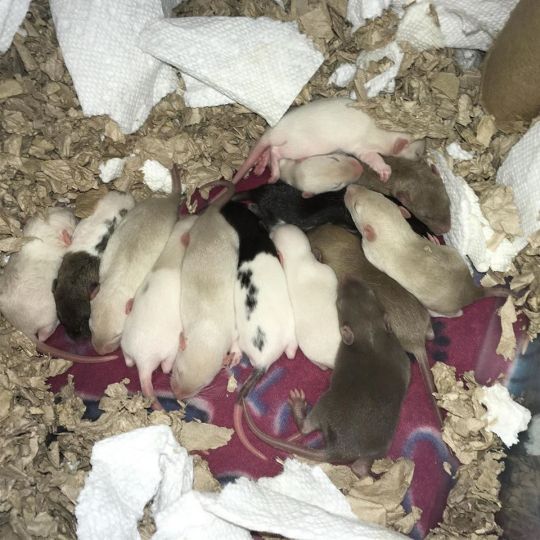
I'm struggling to remember the exact parentage of these babies... I thought they were from Biter and Havershem but now I think they're from Cricket and Biter and Havershem's baby but I can't remember who that would be. 😭
Either way, one parent was black based and one parent was agouti that carried black. Which resulted in half the litter being black based and the other half being agouti based.
Both parents carried a c locus gene. the c locus can be albino, himalayan, or siamese. This litter has a handful of siamese and I believe a single himalayan (it's in the middle on the right of the one with a black head and black spots down its back). The siamese are born with some coloration, which lightens as they age, and himalayans are born completely white and they darken as they age.
Both parents also carried the mink gene, which is a modifier that turns them brown. Mink on top of agouti makes cinnamon and there are two cinnamons in this litter (far right, you can see just the head of one). Mink on black makes... well. Mink. There's one mink in this litter (the lowest one in the picture, whose whole body you can see).
Two ended up plain black with no modifiers or dilutions. One ended up plain agouti (second from the left).
Hopefully that gives you an idea of what's possible in a single litter!
#going through this actually made me sad#a handful of my favorite rats are in this picture :(#can't believe i can't remember who their mom was though...
9 notes
·
View notes
Text
0080: Doctor Strange #183
Cover Date: November 1969 On-Sale Date: July 8, 1969

This issue closes out the this run of Doc's solo series. It kicks off a new arc so the cancellation must have been a come as a surprise to the creative team. No worries, Roy will get a chance to finish his story in other books, though he won't be able to collaborate with Gene on them. This story introduces recurring villains The Undying Ones and provides the spark that leads to the non-team, The Defenders.
The story opens with Doc flying through a storm towards an as-yet unknown destination while a caption gives us a creepy H. P. Lovecraft quote.

While flying toward this unknown destination Gene gives us a series of dramatic panels with Doc having an identity crisis while remembering the events of the prior couple of issues.

Gene uses this recollection to give us a rather spectacular full page image of Eternity.

After he's done all this reminiscing, Doc remembers that he never bothered to read the telegram that kicked off his existential crisis. Better get to it. The telegram is from an old friend that says he needs Doc's help. Doc prepares to visit his old buddy while Clea frets over the whole thing. Her female intuition is apparently going crazy. Doc heads out and we rejoin the present.
Doc arrives at his old buddy's brownstone and is greeted by the creepy butler. It seems all of Doc's old friends are wealthy to some degree. As the creepy butler takes Doc's jacket, we see two other creepy dudes in the hallway who let us know that Doc's old buddy is very sick. The butler asks Doc to keep his visit to a few minutes. We learn that the old buddy's name is Kenneth Ward. Ward is the name of a famous Lovecraft character (who is a doctor) so we have another connection to the author. Of course the room is dark and Gene has to give us a creepy introduction to Kenneth.

The two friends say hello and Doc reminds Kenny about the telegram who vaguely remembers sending it and can't remember what it was about. Doc is naturally suspicious and decides the use the All-Purpose Amulet in a attempt to discern the truth. Even under the all-seeing light, Kenny remembers nothing. But it gives us a good look at him.

Kenny's kind of handsome! Doc's audience with Kenny ends and the butler shows Doc to a room while explaining he had an accident on an exploration last month. Kenny is some sort of archeologist. After entering the room, the creepy butler looks him in. Doc wonders if they know who he is. He drops his Brooks Brothers and the blue and red sorcerer is with us once again. Wanting to make sure no one knows he's playing hooky, Doc conjures and illusion of him in the bed. No pillows under the blanket for this dude!
Doc flies out of his room. The butler should have locked the windows too! He flies into Kenny's room and sees the spell that's been making him a tad forgetful.

Doc sends the nasty set of eyes away. With the creepy spell gone, Kenny starts to remember what happened. Kenny was in-between some Himalayan peaks when he discovered and alien looking site with creepy statues. Lots of creepy things in this story! Gene must have been happy that even though the story is Earthbound, he got to give us some creepy visuals.

Among the big creepy statues is small, creepy, two-headed statue that Kenny decides to appropriate. As he's taking it one of the other statues attempts to fall on him, but misses.

Kenny returns home and encounters "three creatures of the night" who are keeping tabs on poor Kenny. As Kenny ends his narrative, the three creatures reveal themselves as the creepy butler and the two other creepy dudes. They start to close in on Doc who uses the amulet to reveal them.

Kenny tells Doc they want the idol. Doc throws himself into the battle with the three creepy extra-dimensional aliens who's powers equal his own. Doc distracts them with illusions to gain some time. It hearkens back to the Lord Nekron story in that he's distracting them until daylight. Next, we have a repeat of the end of Nosferatu. Doc opens the curtains and the creepy dudes crumble to dust. As they die they warn Doc to beware the wrath of the Undying Ones. While Doc has won the battle, there's a war on the way. Kenny, sadly, has not survived the battle. Doc promises to find the idol and carry on the struggle.
The promised next story, "The Searchers" is never published.

It's not actually a finale, but I think the series goes out on a high note. The story continues in a few months when Doc teams ups with Namor and concludes a few months after that when Doc teams up with The Hulk. While the three don't team up together, it's the seed of The Defenders. Once again, it's a good, well plotted story. It doesn't drag and Gene is in top form. Fortunately all of Gene's work on this series is inked by Tom Palmer who brings out the best of Gene's pencils. He enhances the sold, realistic look Gene brings to the fantastic. The Undying Ones will return to menace Doc and other Marvel heroes over the years and other memorable characters get introduced in the arc. The series may have ended but the story goes on.
#doctor strange#doctor strange reviews#stephen strange#clea#undying ones#marvel#comics#roy thomas#gene colan
4 notes
·
View notes
Note
You mentioned “snow tigers” in your BEW post, what do they look like? :0
A snow tiger is how we refer to a brindle *(viable yellow linked) with any C locus gene.
The colours can be quite variable as all C locus genes have an effec there.
Anything from Himalayan to havana
So you can end up with a mouse that is very light in colour with pale stripes to a mouse thats very dark in colour .
The ideal howwer is something in the middle.
Pale base with bold well defined steipes
Attached is a snow toder Hereford.
The C locus gene turns the bright orange of the viable yellow creme and fades the steipes a little.
This guys stripes whilst not the worst are poorly defined.

6 notes
·
View notes
Note
so, about the black crystal (homozygous) american mink, I've read that it has the COPA genes and can be somewhat similar between hedlund white or the himalayan coat demonstrated in the marbled one

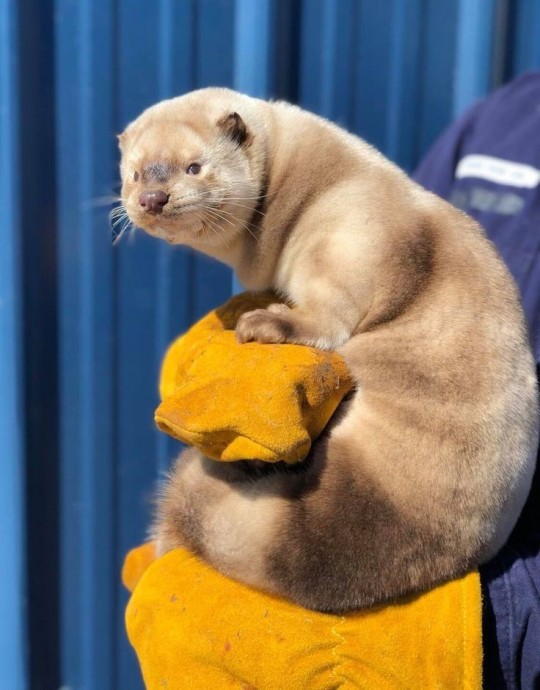
the question is, does the C^r/C^r mink is a temperature sensitive as well?
Yes! I believe so! At least from what I've read it seems like both the minks have a similar gene to the Siamese cat which is also temperature sensitive.
If anyone has any information on this please sound off! I'm really fascinated by mink genetics.
5 notes
·
View notes
Text
there's a specific kind of coatl i want, and like.
my options are:
hope someone lists exactly what i want in the AH
buy something close enough and shell out for the gem genes i want it to have
hope to find a non-coatl with the genes/colors i like and drop 2kg on a scroll for it
breeding project.
breeding project is most likely what i'll do since its cheaper but...
also, before you ask, i dont even know what i want specifically. i just have a vague idea in my mind. im thinking white iridescent/some pink shade jester/obsidian points ????
theres white/white/obsidian in the AH (with arcane eyes which i need) that looks pretty good with the genes, but i'd like the wings to really sell the arcane look. its for my dragon zodiacs, and i want them to evoke 'himalayan rabbit' but also have the pink range secondary for the magic look, considering they'll be a magician.
2 notes
·
View notes
Text
A, B, C, D, E - Cat vs Rabbit
My comparative cat and rabbit color genetics post
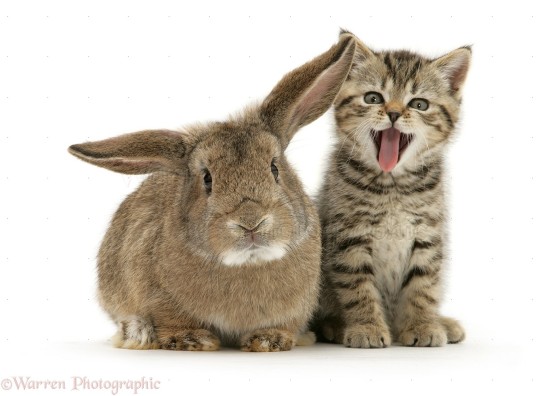
Wild type (black agouti) rabbit and cat
My color genetics interest started out with rabbits, and while I know much more about cats now, they'll always have a spot in my heart...
In this post I'll go through the most important color genes, although sometimes I'll make comparisons based on phenotypes too.
All the photos are from the Warren Photographic Image Library.
A. Agouti
Both species have the dominant agouti (A) and the recessive self or nonagouti (a) alleles.
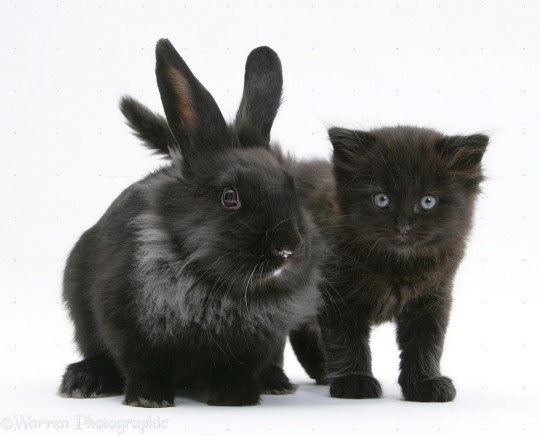
Black self rabbit and cat
Beyond these, cats add the charcoal (Apb) from the leopard cat, while rabbits have the otter or tan allele (at).
B. Brown
Black (B) as wild type, chocolate (b) as variant for both, and an extra recessive allele for cats: cinnamon (bl).
C. Color restriction
The most dominant allele of the series is the full color (C) for both species.
In rabbits the next is dark chinchilla (cchd), this gives the chinchilla and related colorations. Phenotypically basically the equivalent of silver tabbies in cats, despite silver (I) being a different gene. Chinchilla doesn't show up meaningfully on solid rabbits, so there's no smoke there.
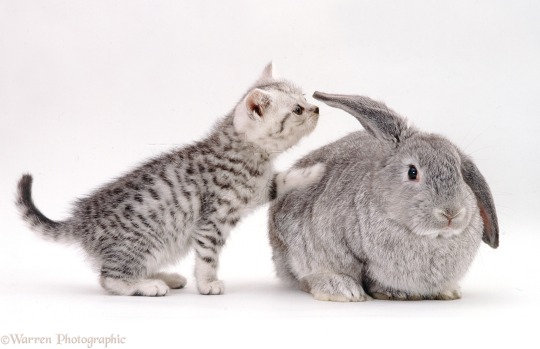
Silver tabby cat and chinchilla rabbit. These are genetically very different colors, but manifest similarly: the animal loses the yellow-red pigments, and keeps the black.
The next rabbit allele in order of dominance is the sable or light chinchilla (cchl) which can be interpreted as the equivalent of sepia/burmese (cb) in cats, although they probably aren't the same mutation, because like the dark chinchilla allele above, sable has "silvering" effect on agoutis. Their shared characteristics are the slightly darker extremities and the intermediate interaction with the point allele.
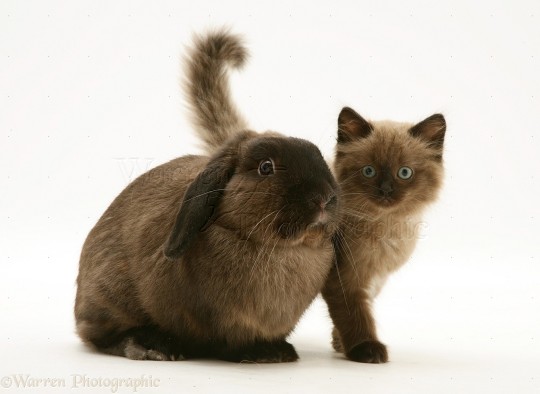
Sable rabbit and sepia (or possibly mink) cat
The colorpoint pattern is also present in both animals under the names siamese (cs) and himalayan (ch). It manifests as pale body with dark extremities.

Pointed cat and rabbit
Edit: unfortunately I made a mistake here: while the color of this rabbit is indeed called point, it's not himalayan, it's nonagouti+sable+red. A real black himalayan rabbit looks like this:
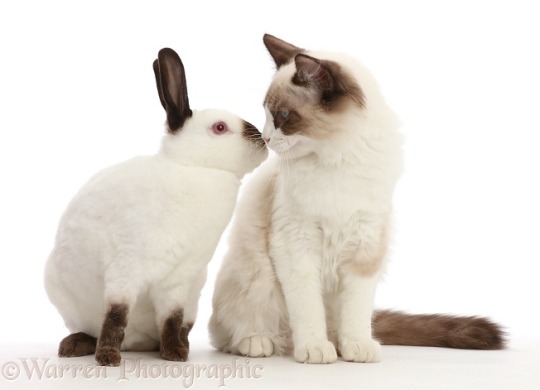
Note the red eyes of the rabbit and the blue eyes of the cat - both suggest depigmentation.
Cats have a rare extra allele called mocha (cm).
And lastly, albino (c) is also present in both.
D. Dilute
Pretty much the same both genetically and in look. Dense (D) is dominant, diluted (d) is recessive.
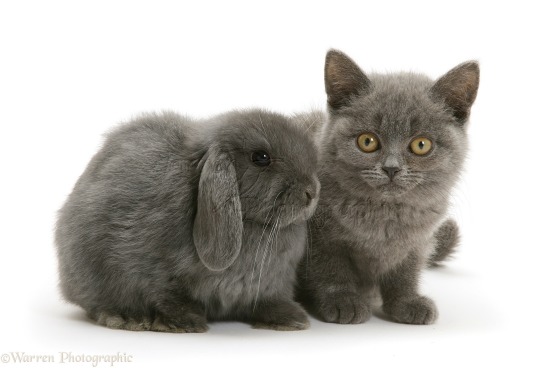
Diluted (blue self) rabbit and cat
E. Extension
The mutations of this gene can be grouped into two categories:
increase of function: overproduction of black pigments. The animal is dark, melanistic. Dominant alleles.
loss of function: underproduction of black pigments. The animal is yellow/red. Recessive alleles.
Rabbits have two dominant alleles in the first group: full extension or dominant black (Ed) and steel (Es); cats have none. (Although this group isn't absent from the cat family either: black jaguars for example have a dominant black mutation.)
In the second group we have lots of different alleles: harlequin or japanese brindle (ej) and red (e) for rabbits, and amber, russet and copal/serdolik for cats (but their red is a different gene!). These all give different reddish phenotypes.
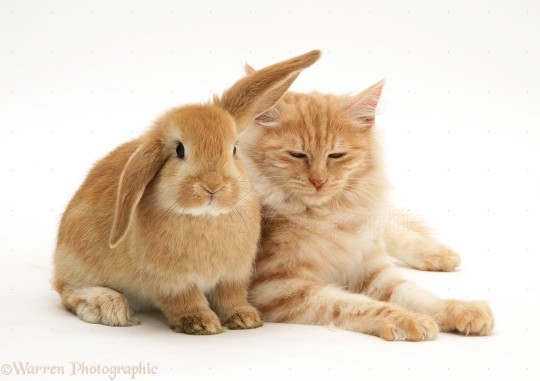
Red rabbit and cat - same name, similar color, different genetics.
The orange gene of the cats is an entirely different matter, and it's just a funny coincidence that harlequin rabbits look so similar to tortie cats. Brindle in rabbits is its own allele, not just the phenotype of the heterozygotes, and it's not sex-linked. Buck rabbits can be harlequins just as easily as does.
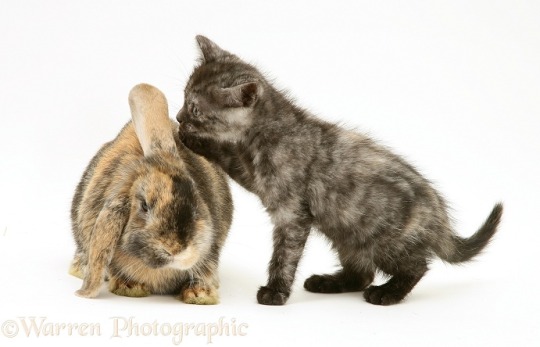
Harlequin rabbit and tortoiseshell cat - similar look, different name, different genetics
To make everything even more complicated, the word "tortoiseshell" (or shortly "tort") is used in rabbit breeding too, but it means a completely different thing than in cats: a nonagouti red. I assume because a nonagouti red rabbit (just like to the genetically very similar nonagouti amber cat) is darker than the agouti counterpart, especially on the extremities.
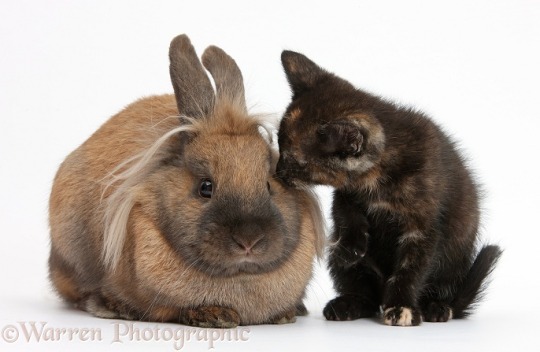
Tortoiseshell rabbit and cat - same name, different look, different genetics: bunny is a recessive homozygote for not sex-linked red, kitten is a heterozygote for sex-linked red.
+1. White spotting
Rabbits have three different white spotting genes: blue-eyed white or viennese, english and dutch. The latter two are strongly linked, the crossing over is rare. It's suspected that all three patterns are caused by mutations on the KIT gene. KIT is also the gene where all the so far known cat white spotting alleles: dominant white, white spotting and white gloving were mapped to.
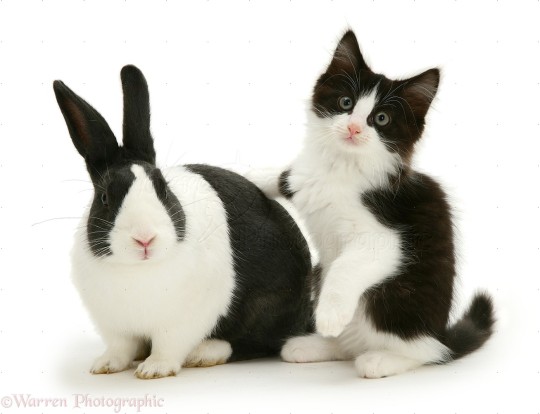
Black dutch rabbit and black bicolor cat. They are remarkably similar, aren't they?
Summary:

#cats#rabbits#cat genetics#rabbit genetics#now that i'm thinking about this sepia tabbies are quite pale too#ugh i love genetics
97 notes
·
View notes
Text

Eat until your stomach is only about 70% full to promote a healthier, longer life. Studies conducted on Himalayan monkeys reveal that activating longevity genes requires reducing calorie intake by around 30%. This means stopping before you feel completely full and maintaining stable blood sugar levels. Overeating, once seen as a symbol of wealth and success, is now recognized as a major health risk. Instead, leave room for nourishment of the mind—through reading, meditation, walking, or exercise.
0 notes
Link
0 notes
Text
Discover Factors Affecting Himalayan Persian Cat Price in India 2024
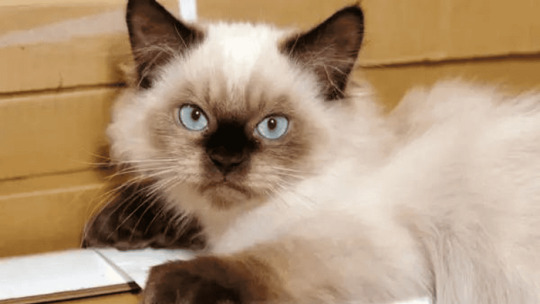
Himalayan Persian Cat Price in India: Himalayan Persian cats, with their striking appearance and affectionate nature, have gained immense popularity among cat enthusiasts worldwide. Originating from the Persian breed, Himalayan Persians boast luxurious coats, captivating blue eyes, and charming personalities. In this article, we delve into the intriguing world of Himalayan Persian cats, focusing particularly on their price in India.
Table of Contents
Himalayan Persian Cat Price in India
Himalayan Persian Kitten Price India
Himalayan Persian Adult Cat Price in India
Origin and History of Himalayan Persian Cat in India
Ancestry and Development
Introduction to Persian Cats
Crossing with Siamese Cats
Physical Characteristics of Himalayan Persian Cat
Coat and Color Variations
Facial Structure
Body Structure
People Also Ask
White Himalayan Persian cat price in India?
Blue Himalayan Persian cat price in India?
Red Himalayan Persian cat price in India?
Black Himalayan Persian cat price in India?
Himalayan cat price in Bangalore, Mumbai, Kolkata?
Himalayan cat price in Kerala?
Personality Traits to Himalayan Persian Cat
Affectionate Nature
Temperament and Behavior
Interaction with Owners
Himalayan Persian Cats in India
Popularity
Breeding Centers
Price Range
Pedigree and Bloodline
Coat Color and Markings
Breeder Reputation
How to Buy Himalayan Persian Cat in India: Buying Guide
Researching Breeders
Health Checks
Adoption Considerations
Grooming Needs
Dietary Requirements
Exercise and Playtime
Conclusion
FAQs
Himalayan Persian Cat Price in India
Himalayan Persian Kitten Price India
On average, Himalayan Persian kittens from reputable breeders in India may range from ₹25,000 to ₹50,000 or more, depending on factors such as pedigree, coat color, and demand.
Himalayan Persian Adult Cat Price in India
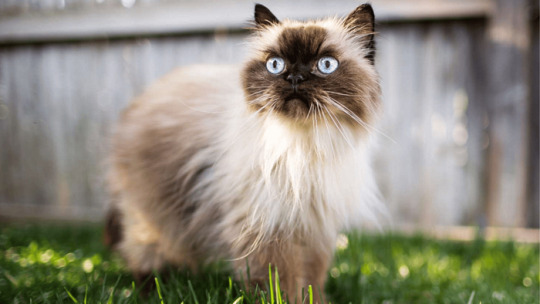
Origin and History of Himalayan Persian Cat in India
Ancestry and Development
The lineage of Himalayan Persian cats can be traced back to the Persian breed. Developed through selective breeding, these cats were initially bred by crossing Persians with Siamese cats, resulting in the distinctive color point pattern and blue eyes characteristic of Himalayan.
Introduction to Persian Cats
Persian cats, known for their long, flowing coats and gentle temperament, serve as the foundation for Himalayan Persians. Originating from Persia (modern-day Iran), Persian cats have been cherished companions for centuries, revered for their beauty and affectionate nature.
Crossing with Siamese Cats
To achieve the color point pattern seen in Himalayan Persians, breeders crossed Persian cats with Siamese cats. This crossbreeding introduced the genes responsible for the pointed coat pattern and blue eyes, giving rise to the unique Himalayan Persian cat. (Himalayan Persian Cat Price in India).
Physical Characteristics of Himalayan Persian Cat
Coat and Color Variations
Himalayan Persian cats exhibit a variety of coat colors, including seal, blue, chocolate, lilac, and more. Their distinctive color point pattern features a lighter body with darker points on the ears, face, paws, and tail. The coat is long, silky, and requires regular grooming to prevent matting.
Facial Structure
One of the defining features of Himalayan Persians is their flat, brachycephalic facial structure. They have a broad, round head with large, expressive eyes and a short, upturned nose. This facial structure contributes to their sweet and endearing appearance. (Himalayan Persian Cat Price in India).
Body Structure
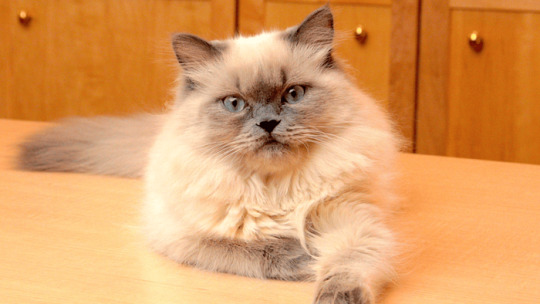
People Also Ask
White Himalayan Persian cat price in India?
It’s important to note that Himalayan cats are not a distinct breed but a point variation of the Persian breed. Therefore, their pricing is generally similar to Persian cats. Here’s a breakdown of the estimated prices.
Blue Himalayan Persian cat price in India?
Price Range: ₹15,000 — ₹50,000+
Red Himalayan Persian cat price in India?
Price Range: ₹15,000 — ₹50,000+
Black Himalayan Persian cat price in India?
Price Range: ₹15,000 — ₹50,000+
Himalayan cat price in Bangalore, Mumbai, Kolkata?
Bangalore, Mumbai, Kolkata: Prices might be slightly higher due to higher demand and breeder concentration. Expect a range similar to the national average (₹15,000 — ₹50,000+)
Himalayan cat price in Kerala?
Kerala: Prices might be comparable to the national average, but researching local breeders is recommended for accurate information.
Personality Traits to Himalayan Persian Cat
Affectionate Nature
Renowned for their loving and affectionate demeanor, Himalayan Persians thrive on human companionship. They enjoy cuddling with their owners and are known for their gentle and laid-back temperament. (Himalayan Persian Cat Price in India)
Temperament and Behavior
Himalayan Persians are typically calm and placid cats, preferring a peaceful environment. They are not as vocal as some other breeds but may communicate through soft meows and chirps. These cats are well-suited to indoor living and enjoy lounging in cozy spots around the house. (Himalayan Persian Cat Price in India).
Interaction with Owners
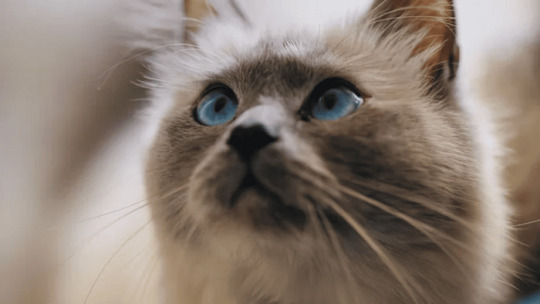
Himalayan Persian Cats in India
Popularity
In India, Himalayan Persian cats have gained popularity among pet enthusiasts and cat lovers. Their striking appearance and affectionate nature make them highly sought after as companion animals.
Breeding Centers
Several reputable breeding centers in India specialize in breeding and raising Himalayan Persian cats. These centers adhere to strict breeding standards and prioritize the health and welfare of their cats. (Himalayan Persian Cat Price in India).
Price Range
The price of Himalayan Persian cats in India can vary depending on various factors, including pedigree, coat color, and breeder reputation. Generally, kittens from reputable breeders command higher prices due to their quality lineage and health guarantees. (Himalayan Persian Cat Price in India).
Factors Influencing Himalayan Persian Cat Price in India
Pedigree and Bloodline
The pedigree and bloodline of a Himalayan Persian cat significantly impact its price. Cats with champion bloodlines and show-quality characteristics may command higher prices than those without pedigree documentation.
Coat Color and Markings
The coat color and markings of a Himalayan Persian cat also play a crucial role in determining its price. Rare color variations and desirable colorpoint patterns may fetch higher prices in the market.
Breeder Reputation
Reputable breeders who prioritize ethical breeding practices and the health of their cats may charge premium prices for their kittens. Buyers often seek out breeders with positive reviews and testimonials from satisfied customers.
How to Buy Himalayan Persian Cat in India: Buying Guide
Researching Breeders
Before purchasing a Himalayan Persian cat, prospective buyers should thoroughly research breeders and visit their facilities. It’s essential to ensure that the breeder follows ethical breeding practices and prioritizes the health and well-being of their cats.
Health Checks
Buyers should request health certificates and documentation for vaccinations and deworming from the breeder. A reputable breeder will provide comprehensive health records and be transparent about the cat’s medical history.
Adoption Considerations
While purchasing from a breeder is one option, adopting a Himalayan Persian cat from a shelter or rescue organization is another worthy consideration. Adopting allows individuals to provide a loving home to a cat in need and often comes at a lower cost than purchasing from a breeder.
Maintaining a Himalayan Persian Cat
Grooming Needs
Due to their long, dense coats, Himalayan Persian cats require regular grooming to prevent matting and tangles. Daily brushing and occasional baths are recommended to keep their coat in optimal condition.
Dietary Requirements
A balanced diet tailored to the nutritional needs of Himalayan Persians is essential for their health and well-being. High-quality cat food, preferably formulated for long-haired breeds, should be provided along with fresh water at all times.
Exercise and Playtime
Despite their relaxed demeanor, Himalayan Persians benefit from regular exercise and playtime to maintain their physical and mental health. Interactive toys, scratching posts, and climbing structures can help keep them engaged and entertained.
Also Read: Discover Brown Persian Cat Price in India | Your Furry Companion Awaits! Also Read: Sheba Cat Food Review India 2024: Purfect Choice or Budget Bite?
Conclusion
Himalayan Persian Cat Price in India: Himalayan Persian cats captivate admirers with their stunning appearance, affectionate nature, and charming personalities. In India, these beautiful cats are cherished companions, with prices varying based on factors such as pedigree, coat color, and breeder reputation. Prospective owners should conduct thorough research and consider all factors before welcoming a Himalayan Persian cat into their home.
FAQs
What factors affect the price of Himalayan Persian cats in India?
The price of Himalayan Persian cats in India is influenced by factors such as pedigree, coat color, markings, and breeder reputation.
Are Himalayan Persian cats expensive to maintain?
While Himalayan Persian cats may require regular grooming due to their long coats, they are not excessively expensive to maintain compared to other breeds. Proper nutrition and regular veterinary care are essential for their health and well-being.
How can one find a reputable breeder for Himalayan Persian cats in India?
Prospective buyers can find reputable breeders through online research, referrals from local cat clubs or veterinarians, and by visiting cat shows and exhibitions where breeders showcase their cats.
Are Himalayan Persian cats suitable for apartment living?
Yes, Himalayan Persian cats are well-suited to apartment living. They are indoor cats that thrive in a calm and peaceful environment, making them ideal companions for individuals living in urban areas.
What is the lifespan of Himalayan Persian cats?
On average, Himalayan Persian cats have a lifespan of 12 to 15 years or more with proper care and attention to their health needs.
#Himalayan Persian cat price in India#cat food#white persian cat#white persian cat price in india#animals#persian cat food#cats of tumblr#persian cat#cat#persian cat for sale#purepet cat food
0 notes